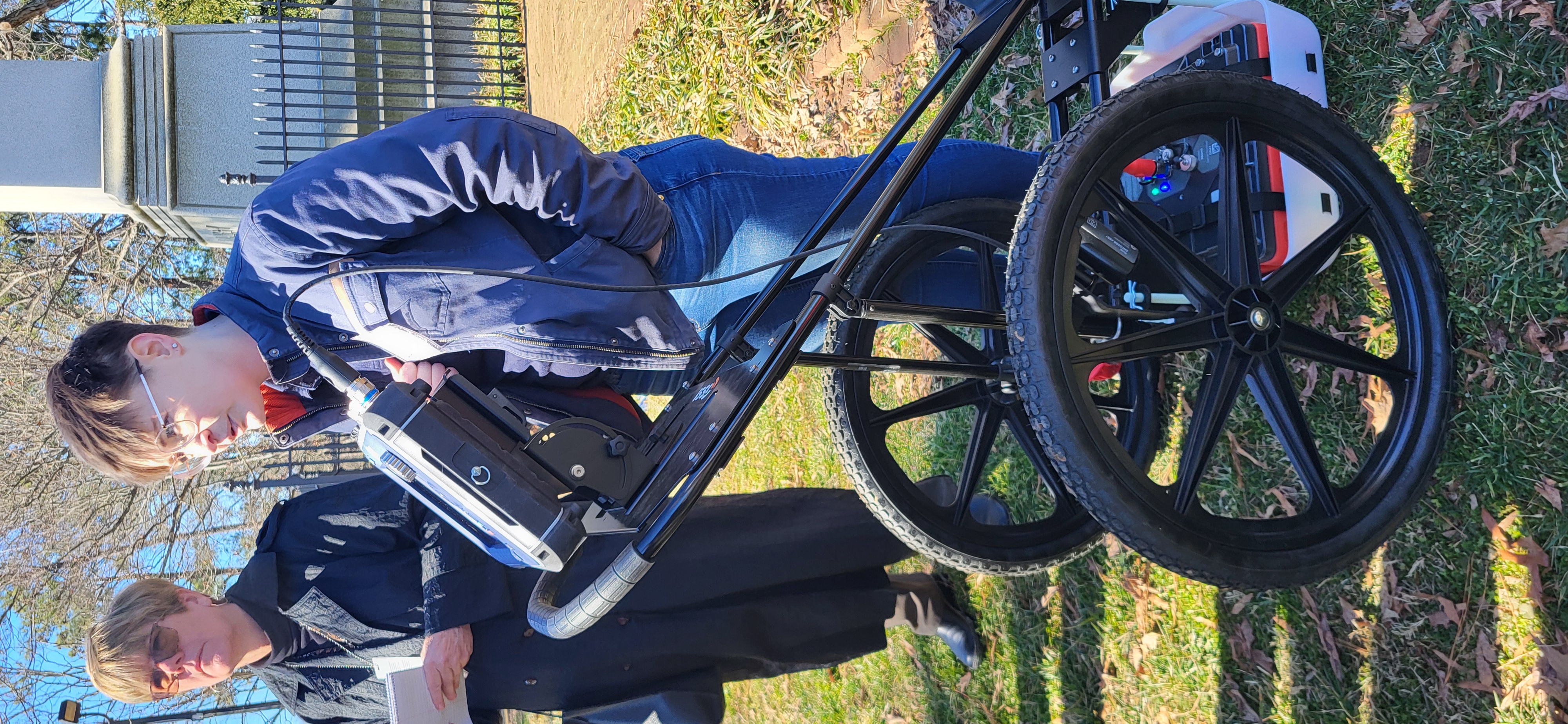Thursday, February 22, 2024
Mount Vernon is seemingly the center of George Washington’s legacy but it began with his mother Mary Ball Washington who was buried in Fredericksburg under a monument that resembles D.C.’s Washington Monument on a lesser scale. The monument acts as her grave site but the exact location of the actual tomb remains unknown so investigators arrived on President’s Day with a grave detecting gadget.
The team was led by historians from Washington Heritage Museums, and a professor from Mary Washington University who manned the GSSI Ground Penetrating Radar apparatus to investigate this colonial mystery. The radar system looks like a cross between a walker for a person with disabilities and a football field measuring system.
“We won’t see individual bones,” said Dr. Katherine Parker, a professor with the Department of
 Dr. Katherine Parker, a professor with the Department of Historic Preservation at the University of Mary Washington.
Dr. Katherine Parker, a professor with the Department of Historic Preservation at the University of Mary Washington.
Monumental Momentum
The Mary Washington monument was dedicated on May 10, 1894 near Mary Ball Street and Kenmore Avenue in the old town portion of Fredericksburg. Since there was no headstone placed when Mary Ball Washington was actually buried in 1789, “it is reported to be near the sandstone outcropping now known as Meditation Rock,” said a historical Washington Heritage Museums pamphlet. Construction of the monument began in the 1830s but was only partially finished which angered a group of local women who formed the Mary Washington Monument Association. They raised enough money to buy the site and finish the monument.
When it was finished in 1894, thousands gathered at the dedication including one of the speakers, President Grover Cleveland. Other presidents who have visited this site include Andrew Jackson, who was president from 1829 to 1837, and Dwight D. Eisenhower, who laid a wreath at the monument in 1954.
MWU student Blake Bauer was on site, operating the GSSI along with Professor Parker. He is majoring in historic preservation and looked at this experience as “a once in a lifetime opportunity,” he said. “It’s very science-ee” he added.
GSSI stands for Geophysical Survey Systems, with headquarters in Nashua, New Hampshire. They have customers all over the world, and their mission is to "help customers solve their subsurface visualization challenges with ground penetrating radar equipment." The GSSI technology is used on everything from checking the structural health of roads, bridges, and skyscrapers to studying the thickness of glaciers, their information stated.